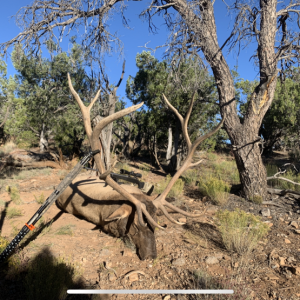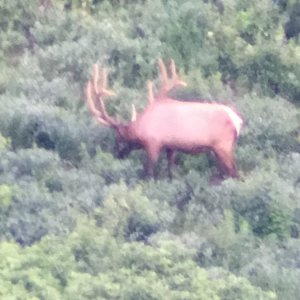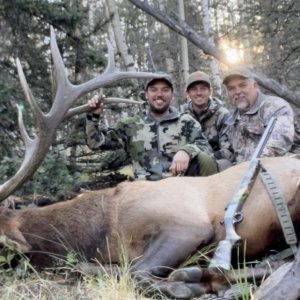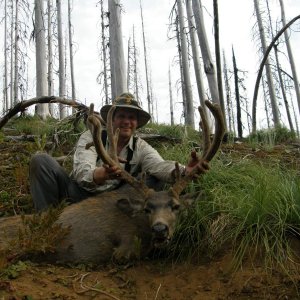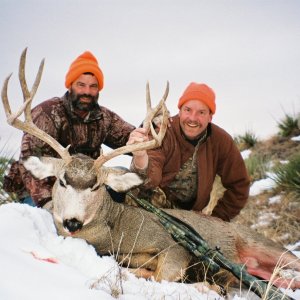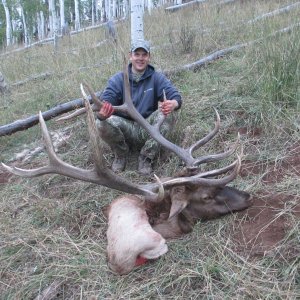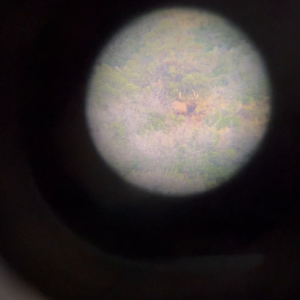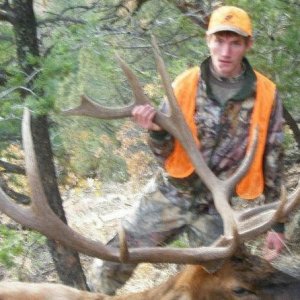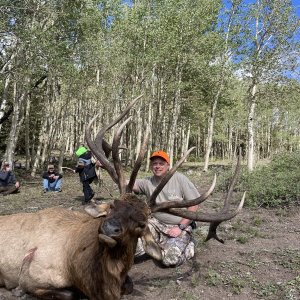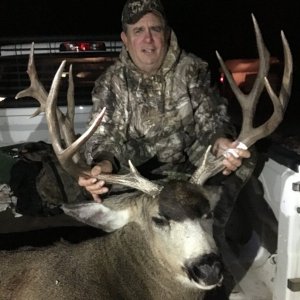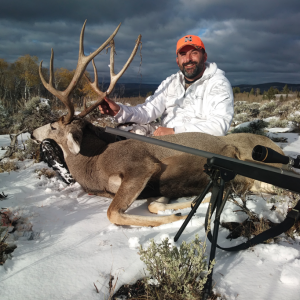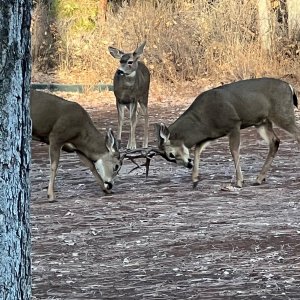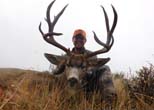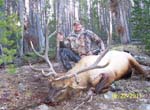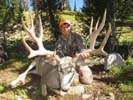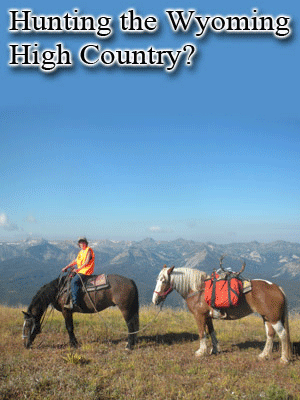LAST EDITED ON Aug-20-13 AT 01:26PM (MST)[p] Here is an article in 1989 that somewhat intelligent people wrote. Tell me are these people in the real world. They just found this out. Hunters knew this for years. Us hunters knew this would happen as soon as the protection was put on the cats. Soon there won't be any deer in CA.
Predators and Prey?A Case of Imbalance
Mountain Lions and the North Kings Deer Herd
--------------------------------------------------------------------------------
Predators are usually considered to be beneficial to ungulate populations by keeping animal numbers in balance with the habitat and removing the weak and old individuals. It is also often said that:
o predators cannot control a healthy deer population, and
o predator numbers are controlled by the prey population size.
According to Don Neal, a research scientist with the Forest Service, Pacific Southwest Forest and Range Experiment Station (PSW) (now retired), stationed in Fresno, California, a recent cooperative study by PSW and the California Department of Fish and Game has shed light on a situation where these theories appear to break down. In the study area on the west slope of the Sierra Nevada, apparently mountain lion numbers have increased while deer numbers declined to about one-eighth their peak numbers in the 1950s. Neal, along with George Steger (also with PSW), studied the California mule deer in the Sierra Nevada from 1970 to 1985 as part of an interagency effort to reverse the decline. This effort showed that the decline was primarily due to loss of fawns during the first 6-8 months of life.
The focus of the study was the North Kings deer here, a population of California mule deer. This herd declined from an estimated 17,000 animals in 1950 to about 2,000 animals in 1988. While the initiation of the decline was probably a result of overpopulation in the 1940s and 1950s, the lack of recovery seems to be related to heavy predation.
Fawn survival a problem
The research team captured 96 newborn fawns and equipped them with radio collars over a 7-year period from 1979 to 1985. These radio transmitters not only allowed the researchers to determine the locations of the fawns, but they also sent out a special signal when the fawns died. This allowed researchers to locate the fawns soon after they died and determine the cause of death. They were able to monitor and determine the fate of 90 of these fawns through their first year of life.
All the fawns were healthy at time of capture, and their size and weight were comparable to those of fawns from other mule deer herds. During the 7 years of the study, fawn survival ranged from 13% to 42% and averaged 38%. Two percent were killed in accidents, 9% died from disease or birth defects, and predators were responsible for the deaths of 51% of the fawns. Of those taken by predators 3% were killed by bobcats, 22% by bears, 27% by coyotes, and 49% by mountain lions.
Neal and his team were at first surprised by these results, because the general perception was that mountain lions were in very low numbers in California--the State Legislature had placed them under protection in 1971. It was obvious that it would require a healthy mountain lion population to be responsible for the death of an average of 25% of all the fawns born each year, as was the case in the North Kings deer herd.
A look at the mountain lions
The next step was to look at the mountain lion population and gain some understanding of movements and density. They knew this would not be an easy task. So Neal and Steger asked for the cooperation of Ron Bertram of the California Department of Fish and Game. This team uncovered some surprising results that run contrary to accepted understanding of mountain lion biology and behavior.
First, they selected a 215-square-mile area within the 800-square-mile range of the North Kings deer herd and set out to capture as many lions as time and funding allowed. Over a period of 3 years, they captured, radio equipped, and tracked 22 mountain lions. During the study they discovered 15 adult mountain lions that were using the area but were not radio-equipped, yet were known to be different individuals.
The lion locations determined by radio triangulation were computer plotted onto large-scale maps and aerial photos. This gave a good picture of daily and seasonal movements of mountain lions in the study area.
Home-range size
By plotting the locations of each cat on a map, the scientists were able to determine the size of the animal's home range and the relationships between individual lions. Home ranges of 14 adult lions tracked over 12 months averaged 285 square miles. Those of females averaged 244 and those of males averaged 340 square miles.
Seasonal movements
Each time a mountain lion was located by radio triangulation and plotted on a map or aerial photograph, the elevation was also recorded. This combination of location and elevation showed that most of the mountain lions migrated to high elevations in the summer and to lower elevations in the winter, following the patterns of the deer--their traditional prey.
However, detailed examination of the data revealed that several of the lions remained at low elevation in the foothills and valley edges throughout the year. They were found on ranches and among the rural communities. These lions occupied territories below most of the migrating deer in the winter, and these areas had no deer in the summer. This leaves only small mammals, livestock, and pets for a diet--a good way for a mountain lion to get into trouble.
Density
With the data on the radio-equipped cats, plus information on the known individuals without radios, the team had the data they needed to estimate mountain lion density.
Of the 22 lions captured and radio equipped within the 215-square-mile study area, not all were alive with operating radios during the entire study period. Therefore, one date was selected, January 1, 1987, and only the 14 lions alive and being monitored on that date were used to estimate density. This of course, underestimates the lion density because it does not include lions without radios using the area , or those with radios that have quit transmitting.
The team recognized that the number of lions using an area and lion density are not the same thing. Every radio-equipped lion used some area outside of the 215-square-mile study area. They calculated the proportion of each animal's home range that was within the study area and used that to estimate density. In other words, if a lion's home range was 50% within the study area, it was counted as 0.5 cat. Therefore, the 14 adult cats using the area on January 1, 1987, adjusted to a total of 6.3 lions, or 2.9 per 100 square miles. When the scientists added in the known cats that were not radio-equipped, making a similar adjustment to allow for only partial use of the study area, they calculated the density of adult mountain lions in the study area at 6.1 per 100 square miles.
Home-range overlap
Mountain lions are generally thought to be solitary animals that defend their home ranges for their exclusive use. But, when you look at the density of mountain lions and the size of the home ranges, it's easy to see that if all the female lions maintained exclusive home ranges, there would be 7.2 times as many acres of home ranges as there are available within the study area.
This can only mean overlap and home-range sharing.
Extensive home-range overlap was found between females, between males, and between females and males. One female shared parts of her home range with five other radio-equipped females and an unknown number of males and unradioed lions.
Reproduction
Other workers have stated that when the density of mountain lions reaches the point that home ranges overlap, breeding stops. However, in this study reproduction continued at what appeared to be a normal rate; and litter size averaged about 2.5 kittens. When the known kittens are added, the density of all mountain lions using the area becomes 10.6 per 100 square miles.
Adult deer are being killed also
To estimate the effect of mountain lions on adult deer, Ron Bertram and his coworkers with the California Department of Fish and Game radio equipped 25 adult does. Their work revealed that a sizeable number of does were being killed by mountail lions in the central Sierra Nevada. Of 25 does radio equipped over a period of 3 years, 12 have died. One was killed by a coyote and 11 by mountain lions.
The bottom line
The bottom line is that in the study area, mountain lions appear to be controlling an already depressed deer herd, and they are apparently not benefiting the population by taking only the weak and old. The density of the lion population is not limited by the need for exclusive territories, and reproduction is continuing within this high-density population.
The magnitude of the problem can be understood when we consider that the ratio of deer to mountain lions has apparently declined from an estimated 750:1 in 1950 to about 30:l in 1988. Deer populations cannot meet the needs of the mountain lions and maintain their numbers with the heavy predation that these ratios bring. This is especcially true when you consider the additional predation from coyotes, bears, and bobcats.
Livestock losses to mountain lions have become a serious concern of this team. The number of permits to take mountain lions that are killing livestock reached an all-time high in 1988, with 145 issued and 62 lions taken. Neal, Steger, and Bertram expect livestock predation to continue at a high level or even increase, and deer to continue to decline in all but the most favorable years.
To learn more about this subject, contact PSW Station and request Research Note PSW-392, titled Mountain Lions: Preliminary Findings on Home-Range Use and Density in the Central Sierra Nevada

